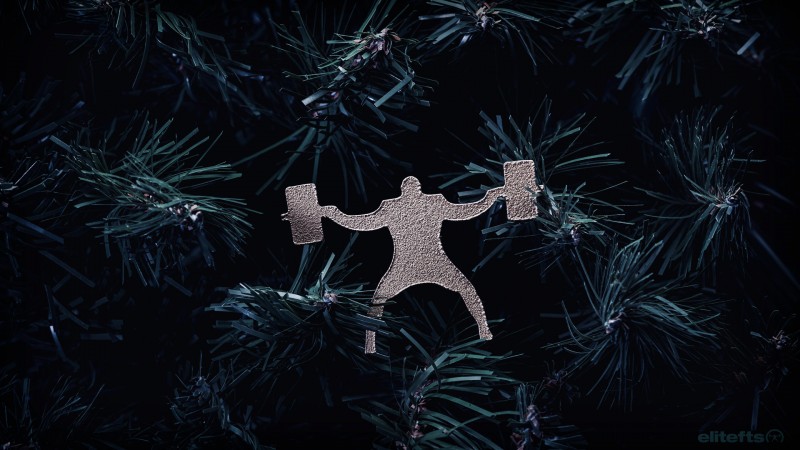
Originally published in February of 2018
As both a powerlifter since my first competition back in 1989 and an assistant principal working in high schools since 1993, I find myself living simultaneously within two vastly different worlds. The educational world, among many other things, is one of patience and care with students. It is working hand in hand with parents and the community and becoming well versed in the world of pedagogical and social nuance. It is a land of a thousand moving parts all happening behind the scenes. It requires a massive collective effort to get the students to grow as much a possible academically, socially, and emotionally in the 720 days of their high school existence. The powerlifting world, among other things, is one of individual effort and training with a relentless drive to better yourself. It is an endeavor where we work to add our names to the mighty book that is the history of powerlifting via championships and records. It is working to become well versed in the world of moving huge amounts of weight through controlled muscular aggression, all the while constantly honing our ability to properly assess and apply disaggregated strength and power enhancement data. At times, these two worlds could not be further apart.
RECENT: The Fermi Paradox and Powerlifting
Having said that, there are far more similarities than differences between the two sides of this one complex coin. Teaching and learning are the two similarities that come to me first. Be it a freshman in high school who is lost in the halls while trying to find their way to their classroom in the midst of the land of seniors, or a brand new lifter trying to find their way through all the lifting apparatus while in the midst of the scarred, overdeveloped muscularity of the brutally strong seasoned powerlifters, teaching and learning takes place with both. Both the freshman and the newbie lifter are living and breathing potential. One day, if all goes well, the freshman will become a successful senior and the newbie lifter will become a decorated seasoned veteran. Both might potentially be capable of great things but in order to reach their maximum potential, they must be taught — and taught well. Even the great Ed Coan had a first meet, a first mentor, and a first lesson.
Point being, when you get past the contrast of the superficial—the school personnel in their shirt and tie with their Chromebook and lesson plan, and the lifter in their squat suit and briefs with kilo conversion chart and training program—you find endless similarities. That said, there is a specific and distinct trait that is a similarity between the two that neither should possess. Fortunately, both can rid themselves of it, but only if they can become cognizant of its existence and how it serves as a direct detriment to their growth.
Not so long ago, while in my educational world, I was in a meeting with my school’s principal and a number of other educators. We were listening to him speak about how schools can become “Christmas tree schools." He was referring to the concept created by Dr. Michael Fullan, a global leader for learning. Looking past the "taboo" religious reference in a public school setting, the concept of a Christmas tree school was foreign to me, so I listened as the principal elaborated about how schools can and often do fall victim to the trap of adding program after program after program, curricular concept after curricular concept after curriculum concept, initiative after initiative, bright and shiny new trend after bright and shiny new trend, in the attempt to get the most growth out of their students.
He spoke passionately about how schools are like people who just keep finding new things to put on their Christmas tree. They keep putting ornament after ornament and string of lights and tinsel after string of lights and tinsel while also adding a load of silver trinkets here and a load of golden trinkets there. Under all of this bedazzled and ostentatious bling, the tree itself can no longer be found. The goal was to highlight a festive tree, where the ornaments would subtly enhance the beauty of the tree, but in the zeal to improve the tree we lost it and its symbolic purpose.
Schools often fall victim to this when they add new and too many curricular initiatives. It can take years just to nurture and grow one or two solid, data-supported initiatives long enough to attain some measurable data points regarding student academic growth. There is a time element as well. What additionally adds to this problem is trading out old initiatives for new ones on the sole criteria of newness.
I listened to this presentation and reflected on my own school. Even as a highly performing high school with a rich history steeped in student success as far as the eye can see, there have been times we have fallen into this very trap. We, a high school consistently in the top five high schools in the state, had at times been a Christmas tree school due to our mentality of always moving forward and our relenting drive to help our students grown and learn. In our zeal for student growth, we keep adding ornaments to the tree.
This thought about the Christmas tree school continued to resonate with me as I drove to the gym after work. The thought was so penetrating that it stayed with me even at the gym. As I sat on the bench press in my powerlifting world, changing from my dress shoes and tie into my beat-to-pieces Chuck’s and Frantz Gym shirt, I watched and listened to the conversations of the lifters as they arrived at the gym, talked, and warmed up.
As I listened to them, to one conversation then another, I began to reflect on the current landscape of our sport, which is a sport that is being filled with a somewhat disproportional crop of new lifters. I began to think of this new influx of lifters and brand spanking new “coaches” at meets and it hit me like ton of bricks. Many of the newer to intermediate lifters were not fortunate to have seasoned mentors or true powerlifting gyms to help them navigate the informational-overloaded waters of powerlifting. Because of this void, in their zeal to become strong(er) they had become Christmas tree lifters, no different than some schools.
Just like the schools with the very best of intentions, some of these hard-working lifters were also collecting ornaments and covering their trees with so much ornamental bling you could no longer recognize the trees. They were collecting training programs from this person and from that person, tips from a presenter at this seminar as well as from that coach from another seminar, exercises and methodologies from this online trainer and auxiliary movements from this other online trainer, etc. They were mixing and matching programs, rotating from this specialty bar over to that specialty bar, adding bands to this movement and chains to that movement, adding bands to the chains, adding bands to the chains, then changing to another bar and re-adding bands and chains, then using all of those things on a box. They were putting on this brief while having alterations to that brief, letting out this suit, trying to stretch out this chest plate and then trying that shirt with a different chest plate, trying this brand of knee wraps, then switching to that style of knee wrap. There were so many ornaments on some of their powerlifting Christmas trees that there was no more room for anything else. And the thing that mattered the most—the powerlifter, the tree—was nowhere in sight and nowhere to be found.
The Christmas tree is the metaphor for the powerlifter. The Christmas tree is the object to be highlighted by the ornaments. But instead, ornaments for ornamental sake now obscure the tree. Thus for the powerlifter, the programs, the gear, the bars, the trainers, the coaches, and the supplements meant to highlight the powerlifter had slowly over time become the focal point and were now overshadowing the lifter. As it is with Christmas tree schools it is with Christmas tree lifters. The tree alone, the bare pine tree, should be the foundation; the ornament is the bonus plan. Thus, the powerlifter and their training is and should be the focus; the cool specialty barbell and specialty movement is the bonus, as it was never intended to be the other way around.
In my articles, I refer to Ed Coan and Ernie Frantz a lot. The reason for this is that there is a lot to go back to with these powerlifting icons. They are living examples and tangible illustrations that it is the focus of the lifter—their work ethic, their technique, their drive, their meat-and-potatoes, straight-up, no-frills program—that makes one legendary. All their success was created by their own hand and through their ability to focus on the lifting. Ed Coan and Ernie Frantz never became Christmas tree powerlifters because their focus was never on the shiny new object, the secret Russian formula, the synthesized supplement, or the amazing powerlifting program that would add 600 pounds to their total in 30 days. They knew and still know that the tree, the lifter, is what is important.
There is a plain and simple truth about the successful non-Christmas tree lifter. They know, train, and live by the wisdom that success in this world of steel bars, iron plates, calloused skin, and chalk-laden hands is the lifter’s technique, the lifter’s diligence, the lifter’s work ethic, the lifter’s consistency, the lifter’s perseverance, the lifter’s indomitable spirit and passion, and the lifter’s intrinsic ability to know when to hit the gas and when to pump the brakes. They know the value of the lifter’s deep understanding of their program and the ability to be truthful with themselves about their squat depth and actual strength. They know the value of the lifter’s understanding that you only have a couple of precious hours in the day to train, so you should take full advantage of every single minute of that time and train with passion and a plan. They know to put that absolutely ridiculous cell phone down and pick up the weights.
The unfortunate reality is, some lifters are slaves to their little black mirror. For them, at minimum, I say save the social media time for those times in the restroom (the toilet is where that phone belongs, in my opinion) and keep that workout-killer out of this sanctuary where greatness is prepared for. Non-Christmas tree lifters know that training time in the gym is fleeting and the meet date is barreling toward you like a freight train hauling the heaviest of cargo. They know that while some lifters are wasting time at the gym “liking” another Christmas tree lifter’s post, their competition is taking full advantage of that time to lift something heavy.
WATCH: Table Talk — Method Muppets
There is, in fact, a time and a place for the ornaments, the programs, the equipment modifications, the boards, the chains and bands, and the coaching. But the minute that the ornaments obscure the tree, that the emphasis shifts from training hard to searching hard for secrets, that specialty movements become more important the main lifts, or that a technique is added without deep understanding of it, the lifter becomes a Christmas tree lifter. It is when this emphasis on the extrinsic overshadows the intrinsic, when the show overshadows the go, when the Instagram photo setup takes more thought than the bench press setup, that the lifter has lost their way. It is that very moment that the rising tide of serious and purposeful lifters will blow past that Christmas tree lifter, never once looking back except perhaps for a final glance at them drowning in their wake.
Let the other lifter be the Christmas tree lifter. Let the other lifter flounder and spin their wheels while they major in the minor things. Let the other lifter get bogged down in the minutia, the trivial, the shiny ornaments, and the false world of “likes” and “views.” The ineffective and stagnant reality of the Christmas tree lifter is that they have never and will never elevate themselves to reach even a fraction of their ultimate zenith of power and strength.
Take the reflective step back. Don’t just look at what you do in the weight room but delve into why you do it, why you added it, the data supporting it, and the results (if any) it is yielding. If the reason for utilizing a movement or technique lacks critical depth and specificity, the aspect you are examining might be nothing more than a shiny and useless ornament.
Header image courtesy of gtranquillity © 123RF.com












1 Comment